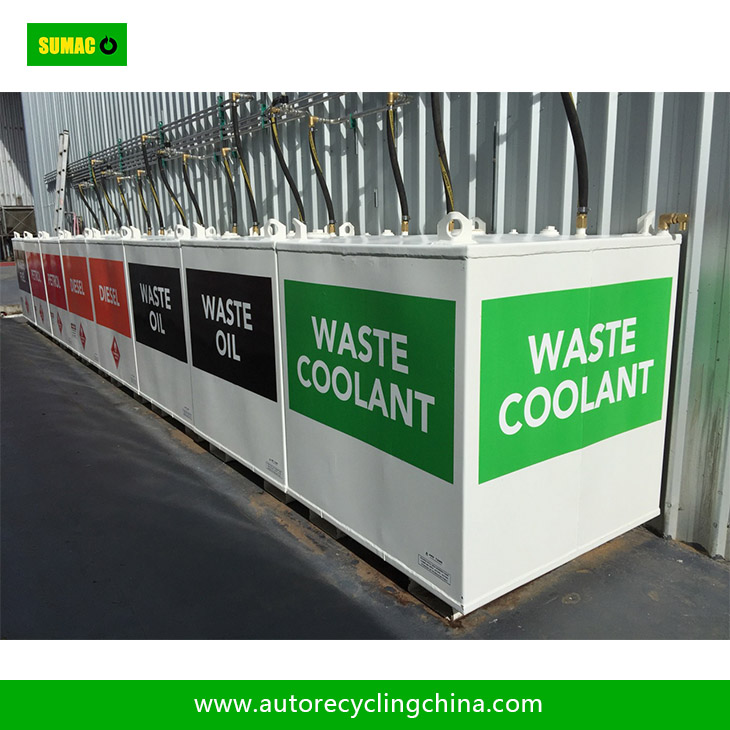A properly designed venting system is critical for safety, emissions control, and tank structural integrity in waste oil storage. Here’s a step-by-step guide:
1. Venting Requirements
-
Pressure/Vacuum Relief: Prevents tank deformation from temperature changes or pump operations.
-
Vapor Containment: Minimizes volatile organic compound (VOC) emissions.
-
Fire Protection: Mitigates explosion risks (e.g., flame arrestors for flammable oils).
2. Vent Types & Components
-
Open Vent Pipes: Simple but risky (exposes vapors to ignition sources).
-
Pressure/Vacuum Relief Valves (PVRV):
-
Set Pressure: Typically ±0.5–1 psi (adjust based on tank design).
-
Material: Stainless steel for corrosion resistance.
-
-
Flame Arrestors: Required for flammable oils (e.g., API 2000 standards).
-
Carbon Adsorption Vents: Captures VOCs (for eco-sensitive areas).
3. Sizing Calculations
-
Airflow Rate: Based on:
-
Pumping Speed (e.g., 10–50 CFM for transfer pumps).
-
Thermal Breathing (0.5–2 CFH per °F temperature change).
-
-
Pipe Diameter: Match vent capacity to max airflow (e.g., 2–4 inches for 500-gallon tanks).
4. Installation Guidelines
-
Elevation: Vents should extend ≥12 ft above ground to disperse vapors safely.
-
Weather Protection: Use rain caps or downward-facing elbows.
-
Anti-Static Measures: Ground all vent pipes to prevent sparking.
5. Regulatory Compliance
-
EPA/OSHA: Requires vapor recovery or control for VOC emissions.
-
NFPA 30: Mandates flame arrestors for Class I/II liquids.

